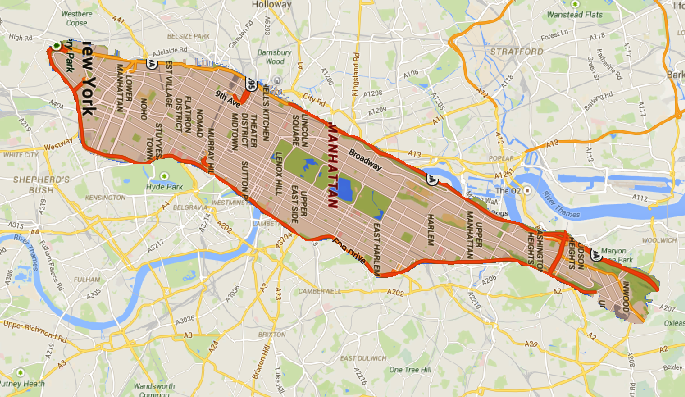
Just for the sake of comparison, we’ve decided to drop Manhattan on top of London this week. Here are the results.

The first thing to note is that you can instantly see how long Manhattan is: all 13.5 miles of it, so that, in London terms, it would stretch from Wandsworth Common all the way up to Edmonton.
It’s wider than we’d given it credit for, too. Look at 34th Street (where the miracles happen): it stretches for two miles across town, from Mayfair to the Imperial War Museum.
Perhaps the biggest indication of quite how big the Big Apple really is, though, is Central Park: 2.5 miles long and a half a mile wide, imposed on London it covers a chunk of the city running all the way from Covent Garden to the northern reaches of leafy Islington.
In this new version of reality, Greenwich Village sits above Vauxhall; Harlem, hilariously, has replaced Stoke Newington. Chelsea (New York) now occupies Knightsbridge, while Chelsea (London) lies where the West Village meets the Hudson River.
London vs Manhattan
The first question faced when taking on this enterprise was how to align the two cities. (Actually, that was about the sixth question that faced us, behind such vital conundrums as “Do the scales definitely match?” and “How is this a real job?”, but let’s leave that aside.)
New York doesn’t have a semi-official central point in the way London does at Charing Cross: the city started at the southern tip of Manhattan, but the central business district, if you can call it that, today stretches all the way up to the edge of Central Park. So in the absence of a better plan, we decided to dump the Theater District on top of London’s Theatreland. Because, well, why not.
But that’s not the only way of doing it. Here’s what happens if you align the points where the two cities are lengthways.

So many options…
[Read more: A map of Paris superimposed on London]






